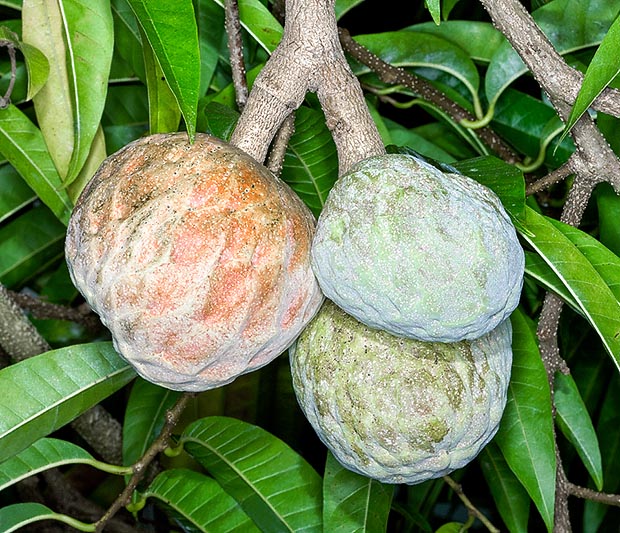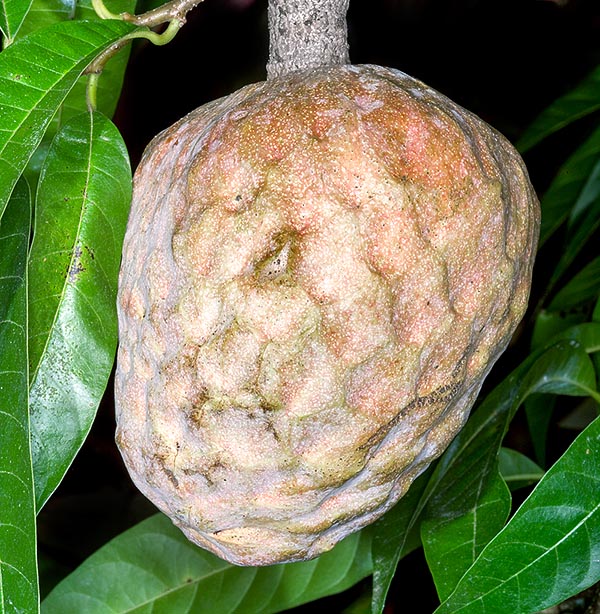Family : Annonaceae

Text © Pietro Puccio

English translation by Mario Beltramini

Cultivated since ever, Annona reticulata is probably native to Central America and Caribbean © G. Mazza
After some, the name of the genus comes from the Latin “annona” = food, nourishment, with reference to the alimentary utilization of the fruits, after others, from its local name (in the Taino language); the name of the species comes from the Latin “reticulus” = small net, with reference to the appearance of the surface of the fruit.
Common names: “bullock’s heart”, “bull’s heart”, “common custard apple”, “custard apple”, “Jamaica apple”, “neted custard apple”, “ox-heart”, “sweetsop” (English); “annone reticulée”, “cachi man”, “cachiman coeur de boeuf”, “cachimantier”, “coeur de boeuf”, “corossol reticulé”, “corossol sauvage” (French); “Netzannone”, “Ochsenherz”, “Ochsenherzapfel”, “Schleimapfel” (German); “anoneira”, “araticum apé”, “araticum-do-mato”, “coração-de-boi”, “milolo” (Portuguese); “anón injerto”, “anona colorada”, “anona corazón”, “anona de corazón rojo”, “anona de Cuba”, “anona de seso”, “anón manteca”, “anona pelona”, anona roja”, “anona rosada”, “anonillo”, “anón pelón”, “cherimoya roja”, “corazón de buey”, “maman”, “mamón”, “manzana de ilan”, “saramuyo” (Spanish).
Small deciduous or semi-deciduous tree, with a rather irregular crown, tall up to about 8 m, it shows lance-shaped leaves, long up to 18 cm and 3-5 cm broad, smooth on the upper page and tomentose on the lower one, with a somewhat unpleasant smell.

The fruit is an edible syncarp. All parts of the plant have medicinal virtues © Giuseppe Mazza
All the parts of the plant have been variously utilized in the traditional medicine. The leaves and the seeds contain substances which have insecticide properties; the sap is irritant and therefore care is needed when cutting the branches.
Synonyms: Annona humboldtii Dun. (1817); Annona excelsa Kunth (1821); Annona humboldtiana Kunth (1821); Annona laevis Kunth (1821); Annona riparia Kunth (1821); Annona longifolia Sessé & Moc. (1894); Annona lutescens Saff. (1914).
→ To appreciate the biodiversity within ANNONACEAE family and find other species, please click here.
